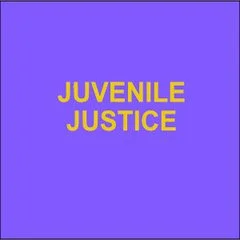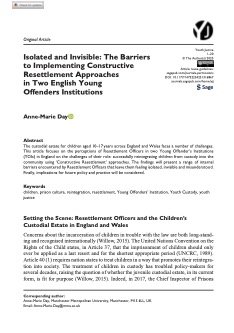By Richard Mendel
A detailed analysis of news coverage at six media outlets in the Baltimore area during the first half of 2024 finds that they have been providing their audiences with skewed and misleading information about youth crime. Problematic coverage has been more frequent at the four local TV news stations analyzed than the two newspapers reviewed and especially prevalent on one local station, WBFF Fox45.
For decades media scholars have noted that local news coverage is often sensationalized and framed in ways that heighten public fears of youthful offending. And this tendency has continued since the outset of the pandemic. This coverage has likely contributed to a shift in public opinion toward tough-sounding policies that conflict with the evidence on what works to reduce youth crime and promote youth success. Indeed, problematic coverage appears to have been a factor behind the bipartisan passage of a juvenile justice bill in Maryland in April 2024 that rolled back evidence-based reforms enacted only two years earlier. The new law imposes harsher responses on youth that are not grounded in research and that are likely to worsen crime, damage young people’s futures, and exacerbate the Maryland youth justice system’s already severe racial and ethnic disparities.
Specifically, this analysis of local news coverage in Baltimore reveals:
Disproportionate focus on crimes committed by youth. All six local media outlets in Baltimore, but especially TV news stations (and particularly Fox45), highlighted crimes by young people far out of proportion with their arrest rates.
Misleading representation of youth crime trends. Whereas the available data on youth offending rates in Baltimore show a mix of trends, most of them favorable, all six local media outlets repeatedly asserted a recent spike in youth crime and violence.
Failure to support assertions of rising youth crime rates with accurate and representative statistics. All six of the news outlets often made or echoed claims about rising youth offending rates either without providing statistical evidence, or – when they did offer statistics – doing so in problematic ways.
Widespread use of fear-inducing rhetoric about youth crime. All six outlets published stories that included rhetoric suggesting that youth crime in Baltimore was rampant or out of control.
Fox45, relative to other news outlets, was much more likely to air sensationalized coverage highlighting youth crime incidents and perceived leniency in the justice system. Each of the problems described above were an order of magnitude more intense on Fox45. On that station, viewers were presented with a steady stream of often lengthy stories offering graphic footage of youth crime incidents as well as sharp and fear-inducing rhetoric from select victims, witnesses, experts, and community residents.
The tone of the Fox45 coverage, and to a lesser extent the coverage at other news outlets, fostered an atmosphere of panic around youth crime during Maryland’s 2024 legislative session. The problematic media coverage in Baltimore (the state’s largest city and home to the State Senate President and the Speaker of the House of Delegates) likely contributed to a bipartisan rush to toughen juvenile justice policies that is unsupported by the evidence of what actually works to reduce youth offending and maintain community safety.
Washington, DC: The Sentencing Project, 2024. 16p.





















